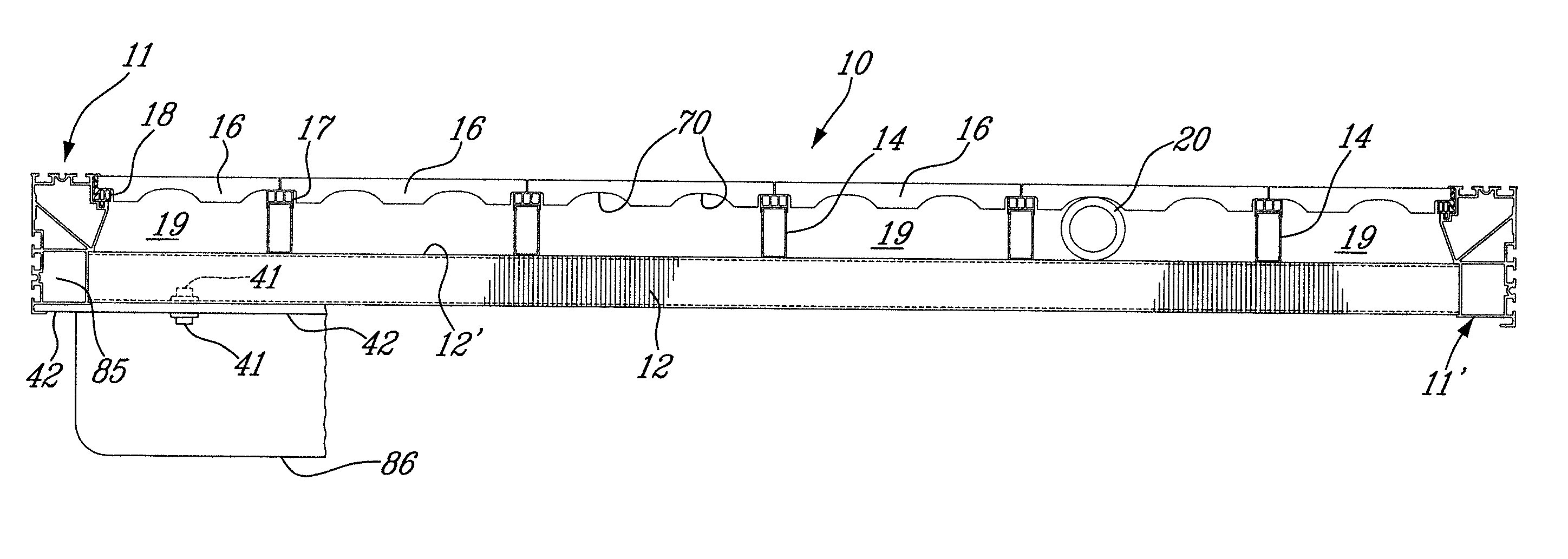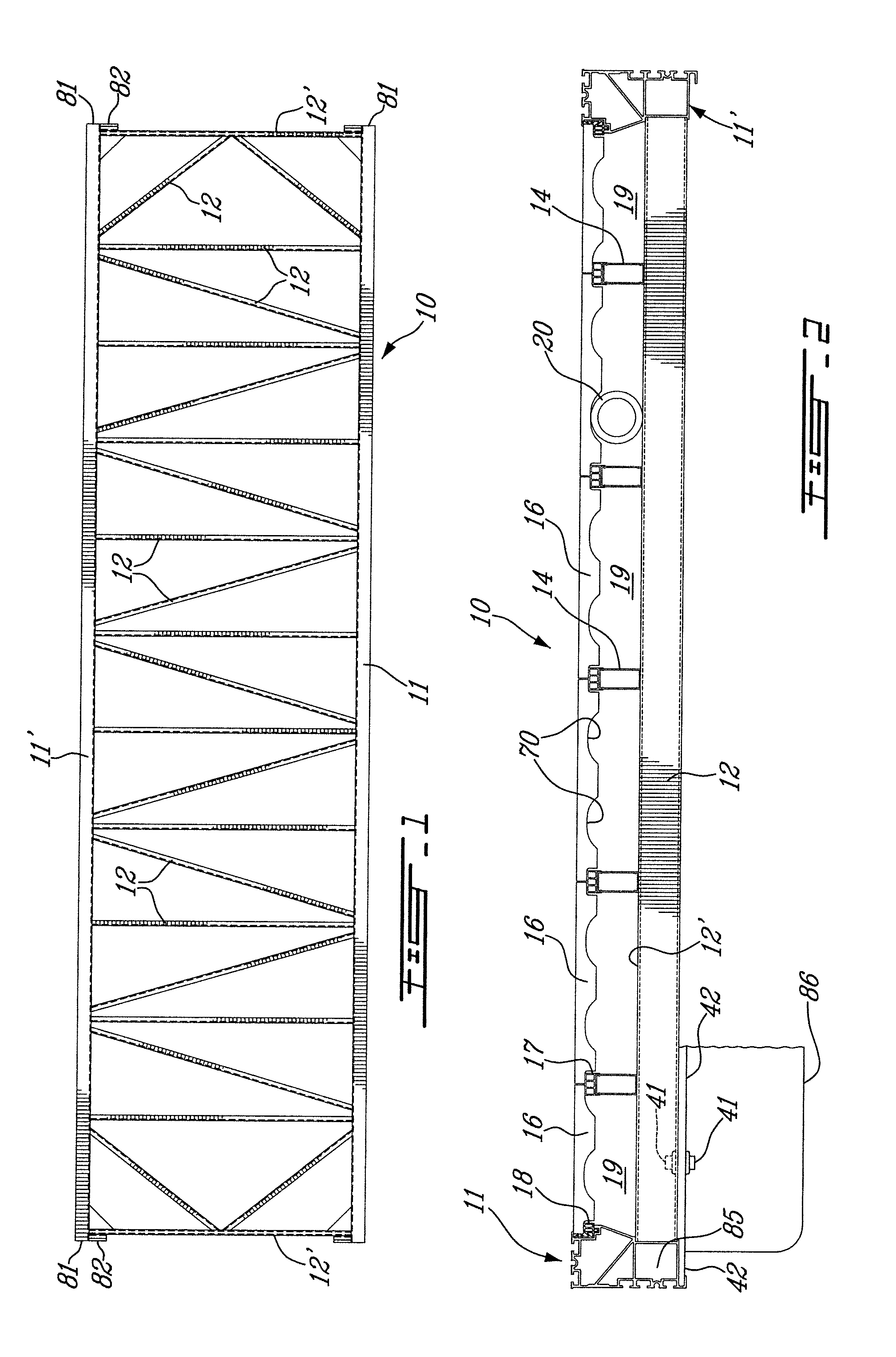Floating dock structure
a dock and structure technology, applied in dry docking, floating buildings, marine site engineering, etc., can solve the problems of torquing force in the connecting structure between the side rails of the dock, damage to the framework and the connection to the floatation casing, and the known floating dock, so as to eliminate noise and wear, and facilitate assembly and repair.
- Summary
- Abstract
- Description
- Claims
- Application Information
AI Technical Summary
Benefits of technology
Problems solved by technology
Method used
Image
Examples
Embodiment Construction
[0029]Referring now to the drawings and more particularly to FIGS. 1 and 2, there is shown generally at 10 the floating dock structure of the present invention. The floating dock structure is a metal structure and is comprised of a pair of aluminum extruded, one-piece, side rails 11 and 11′ which are secured together in spaced-apart substantially parallel relationship by a plurality of cross-members 12. The cross-members 12 are also aluminum extruded one-piece members and they are secured to a lower tubular portion 13 of the side rails 11 by welding. A plurality of elongated deck support stringers 14 are secured in spaced-apart parallel relationship on a top wall 12′ of the cross-members 12 by welding as shown at 15 in FIG. 3A. Decking floor members 16; hereinshown in the form of concrete tiles, are supported between the side rails 11 and 11′ by the stringers 14 and more specifically on decking support connectors 17 removably secured to the top end of the deck support stringers 14 a...
PUM
 Login to View More
Login to View More Abstract
Description
Claims
Application Information
 Login to View More
Login to View More - R&D
- Intellectual Property
- Life Sciences
- Materials
- Tech Scout
- Unparalleled Data Quality
- Higher Quality Content
- 60% Fewer Hallucinations
Browse by: Latest US Patents, China's latest patents, Technical Efficacy Thesaurus, Application Domain, Technology Topic, Popular Technical Reports.
© 2025 PatSnap. All rights reserved.Legal|Privacy policy|Modern Slavery Act Transparency Statement|Sitemap|About US| Contact US: help@patsnap.com



